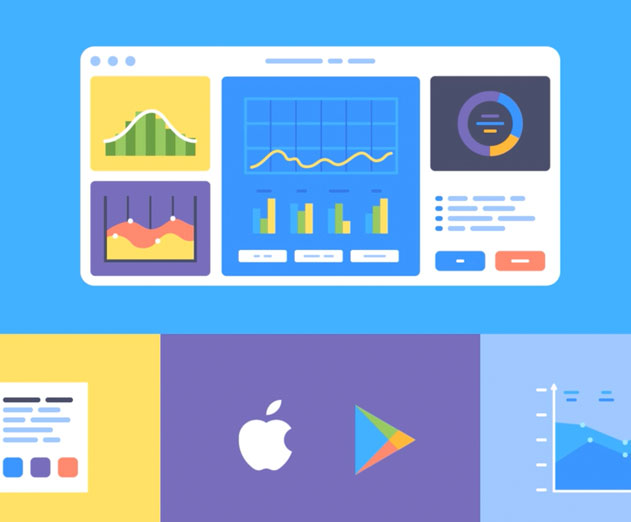Leveraging Mobile Gameplay Analytics and User Psychology For Retention
Friday, March 25, 2016

|
Sergei Kovalenko |
Ever since Apple introduced its App Store in 2008, game developers have been lining up for their share of the now almost $50 billion dollar industry. However, designing games that stand out from the rest of the crowd can be extremely difficult and is now just as much art as it science.
With over 2,000 new apps being added to the App Store and Google Play daily, developers must optimize every aspect of their game to not only entice people to download it the first time, but more importantly to retain the player long term with the hopes of converting them into a paying customer.
To that, game design today is deeply linked to psychology, and using game analytics allows developers to study players’ behaviors using data and statistics to fix gameplay issues, improve engagement and immersion and drive revenue. As such, game analytics provides the opportunity to understand players beyond simple subjective interpretation.
Major areas for gameplay adjustments align with the following aspects of addictive players psychology:
- Cognitive flow: Just like when Steph Curry gets in “the zone” and seems to make every shot he takes, you want players to get into the flow of the game and fully immersed in the experience, so that they can’t wait to get the next level or earn that next power-up. In order to achieve that it is important to keep the difficulty of the game at appropriate levels – too simple, and the game becomes boring, too hard – and higher anxiety gets users discouraged.
- Positive reinforcement: A major staple of human psychology – providing timely and positive feedback to users’ actions keeps them engaged and increases the session length.
- Simplicity/convenience: As opposed to console games, users engage in mobile gaming on the run, with the implication of many distractions around them. A good mobile game design takes into consideration possibility to play the game with one hand only and not overloading it with visual stimuli, allowing the user to succeed in distractions filled environment.
- Autonomy/freedom/control: Perception of the autonomy and freedom of choice people possess was discovered to be one of the main indicators of the levels of happiness in people’s lives. Given mobile gaming users mostly engage with apps in short time intervals throughout the day, the interaction with a game should provide a measure of self-expression and control over different aspects of the experience.
Understanding the aspects that influence whether a game will become addictive allows developers to pay attention to the vital gameplay analytics metrics and thus enables them to:
- Adjust a game’s difficulty at different levels/stages of the gameplay.
- Adapt in-app add-ons prices based on what people buy/don’t buy paying close attention to first-selling items as those are the one making users convert.
- Tweak content based on the demographics of the user base, add new levels and challenges, which can help retain users.
- Understand when players most often leave the game – what are the drop-off events, how the changes in difficulty affect the session length and influence users retention.
Fortunately you don’t need a dedicated server and data guru to set up analytics as there are plenty of free tools that handle the processing and monitoring including Flurry, GameAnalytics, Soomla, Unity, deltaDNA and much more.
While there are seemingly endless numbers to track, if developers simply have a grasp on some of the basic metrics – and then take action against those insights – they can ensure that their game will be on the charts, and profitable, for the long haul.
To get started here are the top metrics to be familiar with:
1. Acquisition
- Downloads (installs) after your app is live, the first obvious step is to measure installs and new users. However, the number of active users will be more indicative as to how many users actually stay with your app.
- DAU (daily active users) is the number of unique users that play the game at least once per day and is a major indicator about how engaged users are. If users are coming back ten times each day you can assume the game has some stickiness versus people only logging in once or twice.
- DAU/MAU this is the ratio of Daily Active Users to Monthly Active Users (MAU) and shows app retention and how frequently users log in to your app. For example, if an app has 100,000 MAU and averages 15,000 DAU then the ratio would be 15 percent. For a game to be successful, this number should be around 20 percent.
2. Retention
- Retention is by far the most important metric, especially in a free-to-play game, this shows how successful the game is at building long-term relationships with users. To calculate retention, separate your users based on the day they download the app. If a user opens your app the next day (Day 1), they are marked as retained, if they don’t they are not retained. Common days used for retention are 1, 3, 7 and 30.
- Low Day 1 retention shows something is seriously wrong with your app from UX/UI and onboarding experience standpoint. High D1 retention projects deceptive revenue – while you are getting money from users right away, the Lifetime Value of such users could be less promising.
- D15 retention benchmark is consequently more indicative for anticipated revenue.
- D7, however, can be significant to retention. Users generally decide if they want to stop using the app within the first 3-7 days. So making users stick with your app for a week is key to success.
- LTV is affected by churn rate – which is the opposite of retention and show how many players that downloaded a game are no longer playing. Churn, however, as an aggregate metric doesn’t offer any substantial insight unless clarified. What is the time period we’re looking at? Are we losing free users or paying customers? What is the activity churn? Recent reports show majority of users will churn within 30 days post-download, and the less activity sessions users log in the first days the higher is their churn rate.
3. Monetization
- LTV is defined as net revenue or profit that a user will generate over his or her interaction with your app, and therefore, is also considered to be the upper limit on money that marketing would want to spend to acquire that user. LTV concept advantage is in shifting the focus from minimizing cost to maximizing value of the acquired user.
- Average Revenue Per Paying User (ARPPU) measures the users who have completed a purchase in a game and can vary dramatically based on game genre. Hardcore games tend to have higher monetization metrics like ARPPU, but they also lack the mass appeal of more casual games.
Conclusion
While there is no magic recipe for game analytics, the above metrics are standards to get started with and establish benchmarks around. Once you understand how your users behave, you can design, tweak or improve the game’s performance to improve conversions, revenue and retention in one fell swoop.
Read more: https://www.aprenita.com/
This content is made possible by a guest author, or sponsor; it is not written by and does not necessarily reflect the views of App Developer Magazine's editorial staff.

Become a subscriber of App Developer Magazine for just $5.99 a month and take advantage of all these perks.
MEMBERS GET ACCESS TO
- - Exclusive content from leaders in the industry
- - Q&A articles from industry leaders
- - Tips and tricks from the most successful developers weekly
- - Monthly issues, including all 90+ back-issues since 2012
- - Event discounts and early-bird signups
- - Gain insight from top achievers in the app store
- - Learn what tools to use, what SDK's to use, and more
Subscribe here




_cptybzmh.jpg)








